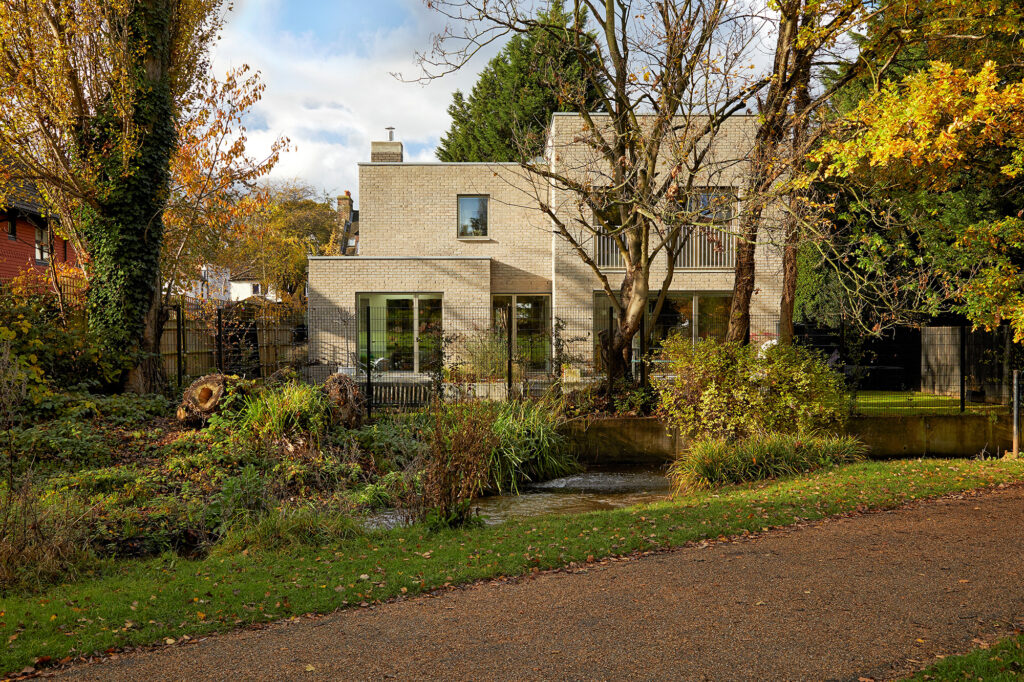19. Working with Green Space
19.1. Green space
Green space helps to support the ecology and biodiversity of the borough, and proposals are expected to identify and retain existing habitats and features of biodiversity value. They should also seek positive gains for biodiversity wherever possible through a design-led approach.
Seemingly underused sites may have important biodiversity and ecological functions. Designers should undertake analysis of such sites, supported by professional consultants where necessary. An architect will be well placed to advise on the selection of ecologists and arboriculturalists (tree experts).
Green space as amenity
As well as the ecological benefits green spaces provide, they offer invaluable amenity space to residents, supporting wellbeing, and providing opportunities for play space, sports, and can serve other purposes such as reducing the noise from a busy road or providing shelter from prevailing winds.
Urban Greening Factor
The London Plan introduces the Urban Greening Factor (UGF) requirement for major development proposals. The UGF is a model used to provide a baseline for the amount of green cover that development will be expected to achieve. Lewisham Council will apply the recommended UGF factors for major residential and commercial development as advocated by the London Plan.
Biodiversity offsetting
If significant harm resulting from a development cannot be avoided, yet the benefits of development are deemed to outweigh the harm, then mitigation measures will be required. This could include biodiversity offsetting, whereby measures to improve existing habitats or the creation of replacement habitats helps to offset any damage on the application site and compensates for this elsewhere (locally). This should be seen as a last resort.
Mental and physical wellbeing
As well as providing significant environmental benefits, green space can help contribute to mental and physical wellbeing. Views of open space, birds and wildlife can improve sleep and reduce stress; plants and greenery can improve air quality and open areas can provide space for physical exercise.
If accepted by the local authority, an agreement of the offset measures will be secured by way of planning obligations or planning conditions. For more guidance see:
19.2. Trees
Trees and the urban forest are an integral part of the borough’s network of green infrastructure and have many beneficial functions. In addition to enhancing local character and amenity, including air quality, they provide extensive areas of habitat for wildlife, which is particularly important in an urbanised setting like Lewisham. Trees also have an important role in climate change adaptation and mitigation.
Development proposals should seek to retain existing trees, as well as the associated habitat, and maximise opportunities for additional tree planting and green infrastructure. This is regardless of Tree Preservation Order status (TPO).
The destruction of existing landscape /biodiverse features, and / or the felling of mature trees on a site prior to an application coming forward will reflect badly on an applicant and the any planning application will be expected to mitigate these losses.
As per Woodland Trust guidance, trees that are removed should be replaced with a greater than 1:1 ratio. Only where it is unavoidable should trees be removed, providing their removal is outweighed by the benefits the development offers.
Root protection area
Developments must avoid compromising and encroaching on available space for trees. In addition to the visible part of a tree, designers need to consider the root protection area (RPA) located below ground. British Standards advise a rule of thumb for estimating the RPA by measuring the diameter of the stem of tree at chest height and multiplying this by 12, although this varies by species. Developments nearby retained trees will require a tree survey and method statement as part of a planning application. An architect will be able to advise on the selection of an arboriculturalist.
Benefits
In addition to the myriad ecological benefits trees provide, they can offer benefits or solutions to the design of developments including:
- Help with overlooking
- Protection from overheating. With leaf cover in the summer, trees provide shade and protection from the sun. Where trees are deciduous, leaves fall, and winter sun is allowed to reach more of the building thus reducing heating demands
- Provide acoustic buffers to sites nearby busy roads
- Add value to a site
Lots of people enjoy living near trees, and new homes that work with existing mature greenery are more desirable. For more guidance on working with trees see:
- Woodland Trust – Residential Developments and Trees
- Urban Tree Manual
